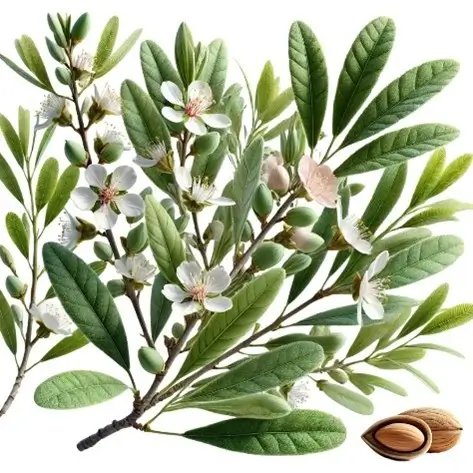General Introduction to Bitter Almond (Cyanogenic Glycosides):
- Bitter almond contains cyanogenic glycosides that release hydrocyanic acid upon enzymatic hydrolysis.
- It is used in small amounts for its flavoring and therapeutic effects but is toxic in high doses.
Synonyms of Bitter Almond (Cyanogenic Glycoside):
- Common name: Bitter Almond
- Scientific name: Prunus amygdalus var. amara
- Synonyms: Amygdalin, Cyanogenic almond
Biological Source:
- Derived from the seeds of Prunus amygdalus var. amara.
Family:
- Rosaceae
Advertisements
Composition:
- Major glycosides:
- Amygdalin: The primary cyanogenic glycoside.
- Prunasin: A related compound.
- Hydrolysis of amygdalin releases benzaldehyde (aromatic compound) and hydrocyanic acid (HCN) (toxic).
Chemistry & Chemical Classes:
- Chemical Class: Cyanogenic glycosides.
- Structure:
- Amygdalin consists of a sugar moiety linked to a cyanohydrin.
Therapeutic Uses of Bitter Almond (Cyanogenic Glycoside):
- Expectorant: Small doses are used to treat coughs.
- Flavoring agent: Used in food and pharmaceutical products.
Commercial Applications:
- Bitter almond oil is used in perfumes, confectionery, and as a flavoring agent.
Click Here to Watch the Best Pharma Videos
Advertisements


